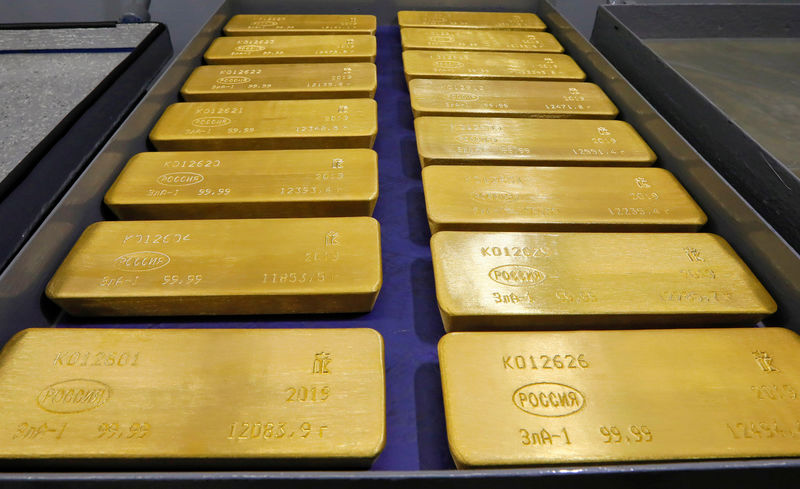Investing.com -- Gold prices recovered overnight losses in Monday trading after President Donald Trump and Commerce Secretary Wilbur Ross poured cold water on hopes for at least a preliminary deal on trade with China.
Further supporting demand for haven assets, the ISM manufacturing survey for November fell again, with orders and hiring both weakening from the previous month, defying consensus forecasts for an improvement. The ISM purchasing manager index was, however, something of an outlier on a day when similar PMIs compiled by IHS Markit – including one for the U.S. - showed a modest improvement in manufacturing activity last month.
By 11:30 AM ET (1630 GMT), gold futures for delivery on the Comex exchange were down 0.2% at $1,469.05, while spot gold was effectively unchanged at $1,463.55.
Silver futures were down 0.5% at $17.02 an ounce while platinum futures were up 0.4% at $904.40.
Earlier Monday, the U.S.’s biggest gold miner Newmont Goldcorp (NYSE:NEM) said it would buy back $1 billion worth of stock, an indirect way of saying that there are better ways to create value than to invest in expanding production at current prices.
However, supply considerations were of secondary importance on a day when the U.S. administration was acting in concert to revive the threat of tariffs against China. Trump first waved the big stick by re-imposing tariffs on imports of steel and aluminium from Brazil and Argentina in retaliation for alleged currency dumping, before Ross told Fox Business that Trump would “certainly” levy further tariffs on Chinese imports, as scheduled, if China doesn’t offer more concessions on trade by the deadline of Dec. 15.
Trump also repeated in vaguer terms, before leaving for a NATO summit in London, that he wanted further concessions. He noted that the situation in Hong Kong was complicating trade talks, a nod to the angry Chinese reaction to the U.S. enacting the Hong Kong Human Rights and Democracy bill last week.
"Those hoping for a truce in trade wars may be premature," Grant Thornton chief economist Diane Swonk said via Twitter. "The risk (to equities) is to the downside as trade tensions remain heightened."
